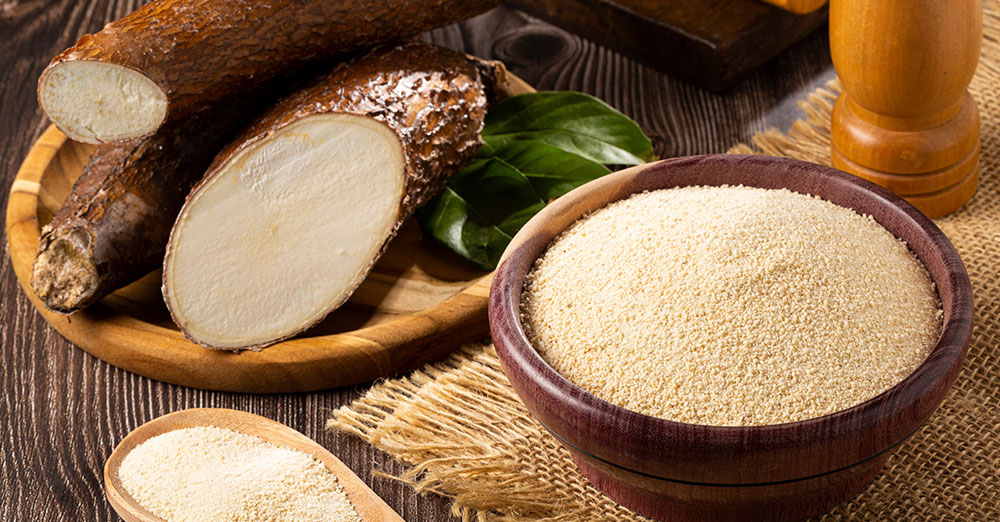Africa has some of the most delicious, diverse, and vibrant cuisines in the world! From North to South and East to West, the continent offers a wide variety of popular dishes that are staples for many families. From creamy sauces and savory stews all the way to spiced-up curries and spicy soups, African food is packed with flavor and nutrition. Whether you’re looking for a hearty meal or a light snack, there are plenty of African food commodities to choose from – here’s an overview of the most popular ones:
Cassava
According to Business Insider Africa, cassava is one of the most produced food commodities in Africa, accounting for over 63% of total global production. It’s an essential part of the African diet, as it can be boiled, mashed, fried, or even ground into flour to make porridge or uji in Swahili or fufu. It’s rich in dietary fiber, minerals, and vitamins like Vitamin C and Vitamin B6.
Maize
An East African staple, maize or mahindi in Swahili, is an economic grain used to make a variety of dishes in the region. Maize was first recorded by Europeans in 1492 during Christopher Columbus’s voyage to the Americas. Over time, maize has been cultivated and crossed with other species to produce hybrids that are better suited for different growing conditions.
In East Africa, maize is a dietary staple that can be eaten in many different ways. Ugali, a popular dish made from boiled and pounded maize flour, is often served with a variety of sauces and stews. Other dishes include Githeri, a mixture of boiled maize and beans, often stewed with tomatoes and onions.
Millet
Millet (mtama), a small-grained cereal grass that produces edible grains, is another staple African food commodity. It’s very popular in West Africa, especially Nigeria, Niger, Mali, and Burkina Faso, where it’s used to make dishes like tuwo, a Nigerian polenta-like dish. It’s also quite popular in East and Central Africa, where it’s ground into flour to make porridge.
Yams
Did you know that West Africa is known as the Yam Belt? With over 60 million West Africans involved in the production of yam, it’s one of the most important staple food commodities in African cuisine. Yams are traditionally eaten boiled and mashed into a starchy dough-like paste known as swallow or fufu, often served with mixed vegetables, eggs, and meat curries or stews. Yams are also a great source of antioxidants, fiber, manganese, potassium, and copper, making them an overall healthy choice.
Rice
From the beautiful plains of Mwea, Kenya, to the beautiful terraces of the Kano in Nigeria, rice is a staple food in Africa and around the world. It is a dietary mainstay for families and communities in many areas. Rice provides essential nutrients such as carbohydrates, proteins, vitamins, and minerals. It’s used to make traditional dishes like Pilau, an East-African staple made with rice, meat, and spices, as well as Biryani, a savory Swahili rice dish with roots in India. Rice is also used to make a variety of snacks, desserts, cakes, and other treats.
Bottom Line
African foods are as diverse and varied as the continent’s geography, climate, and cultures. From Fufu to Githeri, maize to rice, each staple offers unique nutritional benefits and flavors. Eating a variety of African staples can help ensure you get the nutrients your body needs to stay healthy and energized. So, whether you’re living in Africa or traveling there, make sure to try some of the delicious dishes that make Africa a food lover’s paradise!
Sources
Hobbs, J. (2017). 15 of Africa’s favorite dishes. CNN. https://edition.cnn.com/travel/article/africa-food-dishes/index.html
OLUWOLE, V. (2023). Here are the 5 most produced cash crops in Africa. Business Insider Africa. https://africa.businessinsider.com/local/markets/here-are-the-top-5-cash-crops-in-africa-by-production/3rkp4fd#
Pasi, C. (2021). 5 commodities that will determine the future of food security in Africa. mbas-for-africa. https://www.mbas4africa.com/post/5-commodities-that-will-determine-the-future-of-food-security-in-africa


